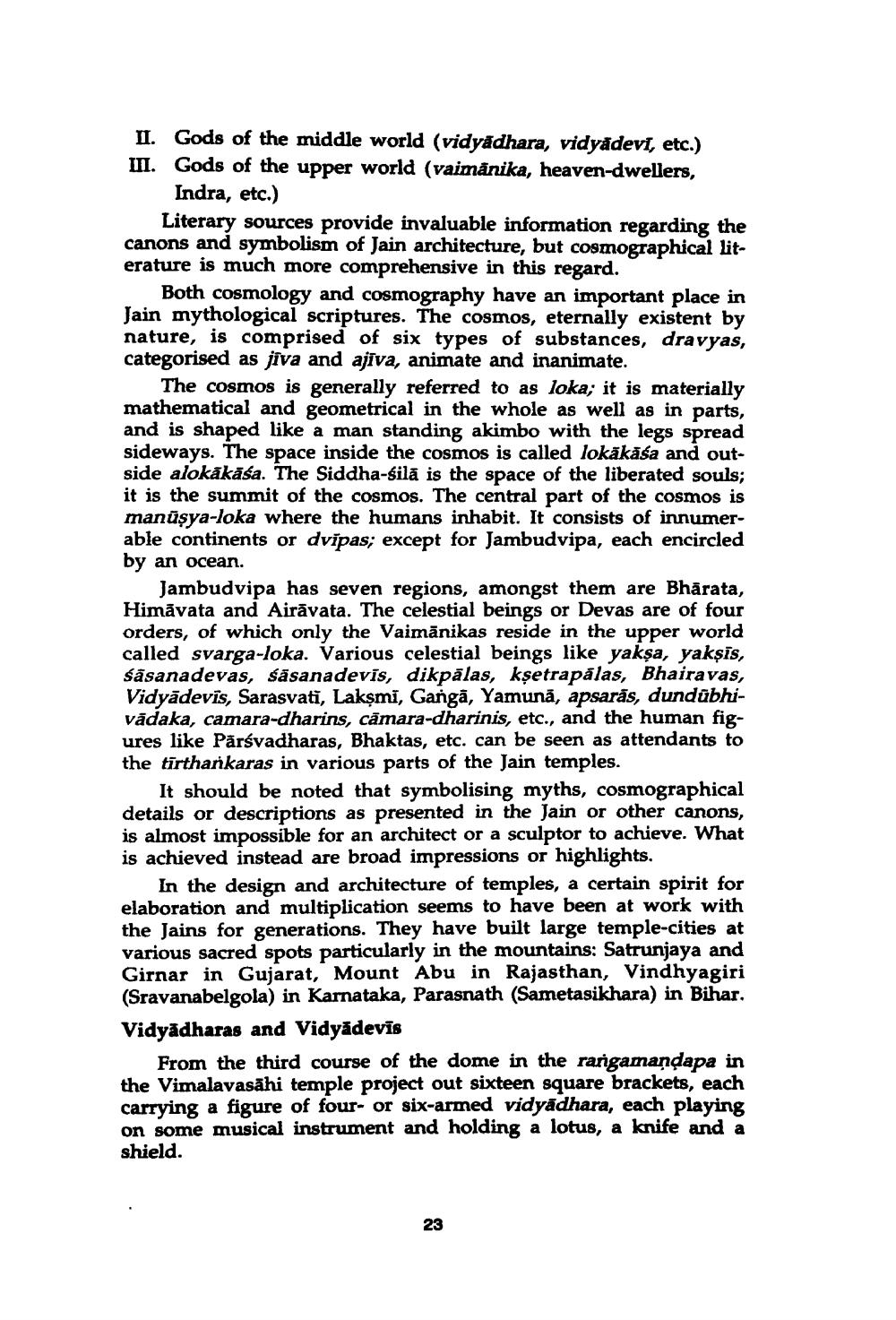________________
II. Gods of the middle world (vidyadhara, vidyādevī, etc.) III. Gods of the upper world (vaimānika, heaven-dwellers,
Indra, etc.)
Literary sources provide invaluable information regarding the canons and symbolism of Jain architecture, but cosmographical literature is much more comprehensive in this regard.
Both cosmology and cosmography have an important place in Jain mythological scriptures. The cosmos, eternally existent by nature, is comprised of six types of substances, dravyas, categorised as jiva and ajīva, animate and inanimate.
The cosmos is generally referred to as loka; it is materially mathematical and geometrical in the whole as well as in parts, and is shaped like a man standing akimbo with the legs spread sideways. The space inside the cosmos is called lokākāśa and outside alokākāśa. The Siddha-sila is the space of the liberated souls; it is the summit of the cosmos. The central part of the cosmos is manūşya-loka where the humans inhabit. It consists of innumerable continents or dvipas; except for Jambudvipa, each encircled by an ocean.
Jambudvipa has seven regions, amongst them are Bhārata, Himāvata and Airavata. The celestial beings or Devas are of four orders, of which only the Vaimānikas reside in the upper world called svarga-loka. Various celestial beings like yakṣa, yakṣīs, sasanadevas, sasanadevis, dikpālas, kṣetrapālas, Bhairavas, Vidyādevis, Sarasvati, Lakṣmi, Ganga, Yamuna, apsarās, dundübhivādaka, camara-dharins, camara-dharinis, etc., and the human figures like Pärśvadharas, Bhaktas, etc. can be seen as attendants to the tirthankaras in various parts of the Jain temples.
It should be noted that symbolising myths, cosmographical details or descriptions as presented in the Jain or other canons, is almost impossible for an architect or a sculptor to achieve. What is achieved instead are broad impressions or highlights.
In the design and architecture of temples, a certain spirit for elaboration and multiplication seems to have been at work with the Jains for generations. They have built large temple-cities at various sacred spots particularly in the mountains: Satrunjaya and Girnar in Gujarat, Mount Abu in Rajasthan, Vindhyagiri (Sravanabelgola) in Karnataka, Parasnath (Sametasikhara) in Bihar. Vidyadharas and Vidyādevis
From the third course of the dome in the rangamaṇḍapa in the Vimalavasahi temple project out sixteen square brackets, each carrying a figure of four- or six-armed vidyadhara, each playing on some musical instrument and holding a lotus, a knife and a shield.
23




